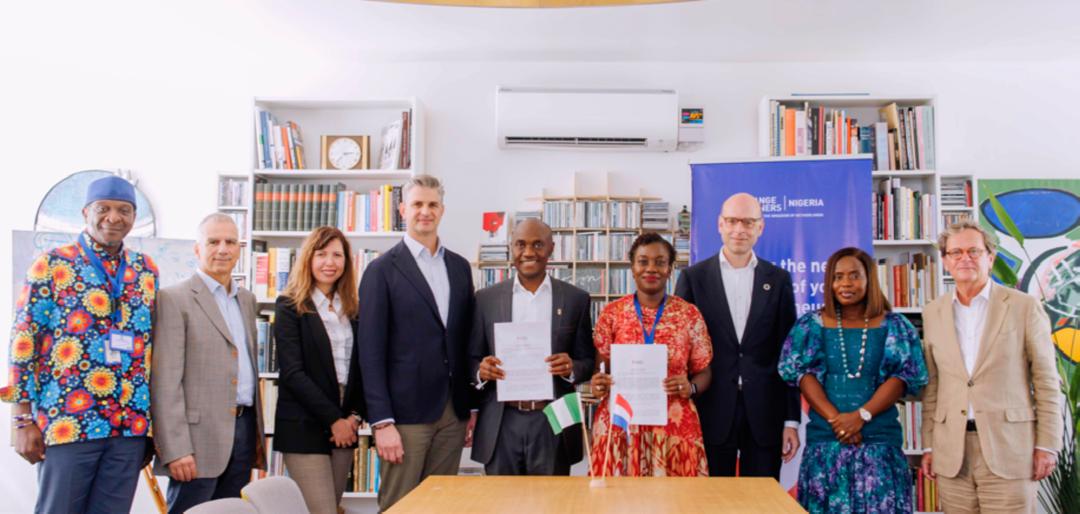Education
Africa’s $50bn Private Higher Education Sector Set for Accelerated Growth

By Dorian Maillard
The world is hurtling headlong into a digital future, and one crucial resource is in short supply: tech talent. Projections paint a stark picture. By 2030, the global tech talent shortage could soar to 85 million, translating to $8.5 trillion in potential lost annual revenue, and there’s no viable solution at scale to fill this looming deficit.
Yet, amidst this intensifying scramble for tech talent, a paradox unfolds. Africa, a continent brimming with potential, stands as a vast, untapped, and overlooked goldmine of tech talent that will be home to over 200 million digital natives by 2030. While the reasons for Africa’s underrepresentation in global tech are complex and multifaceted, innovative solutions are emerging, countless initiatives are underway, and the potential for further progress is enormous.
Navigating critical challenges in Africa’s higher education
Quality of education
African universities face challenges in delivering high-quality education, impeding the development of tech talent. Outdated curricula often fall short of meeting the dynamic demands of the tech industry, leaving graduates with skills misaligned with practical job requirements and the latest technologies. In addition, inadequate infrastructure and resources hinder hands-on training, limiting students’ ability to acquire necessary expertise.
Access to education
Ensuring broader access to higher education is imperative. Doing so involves tackling challenges related to affordability, enhancing infrastructure, and facilitating access to online education, which has gained heightened significance in light of the COVID-19 pandemic.
Despite notable strides in extending education across all age groups and internet access and smartphone penetration exceeding 80% in most developed African countries, many individuals struggle to access education. Over 20% of primary-age children and nearly 60% of youth aged 15 to 17 remain excluded from education, whether in the digital realm or the physical world.
Affordability is a primary barrier. Soaring tuition costs, coupled with constrained financial resources, often prevent talented individuals from pursuing advanced studies. This burden disproportionately affects students from low-income households, who struggle to afford basic tuition fees, let alone additional expenses like accommodation, textbooks, and transportation. The scarcity of financial aid and scholarships exacerbates the problem, leaving many deserving individuals without the means to pursue their educational goals.
Inadequate infrastructure, particularly in rural areas, poses another significant obstacle to educational access. Shortages of classrooms and libraries hinder the learning process, limiting opportunities for higher education. Furthermore, insufficient technology resources, such as computers, internet connectivity, and educational software, contribute to a widening digital divide that intensifies educational disparities and prevents individuals from meeting the demands of the 21st-century tech workforce.
Economic, political stability, and industry engagement
A robust and stable economic and political environment is the cornerstone for fostering a thriving tech talent ecosystem. It provides a fertile ground for businesses to invest in R&D, creating opportunities for tech professionals to learn, innovate, and refine their skills. This fuels technological advancements, propelling the sector forward and attracting further investment.
Development Finance Institutions (DFIs) like the World Bank, IFC, BII, Unicaf, DEG, SwedFund, Norfund, IDC, and OPIC, in collaboration with governments, universities, and businesses, have a vital role to play in fostering a more prosperous business environment, which directly and indirectly benefits the education sector. These organisations can identify skills gaps, develop training programs, and catalyse new partnerships to generate employment opportunities for graduates.
Governments and DFIs have already made notable achievements by implementing sound policies. Seychelles now ranks among the top 50 education systems globally, surpassing countries like Ukraine, Hungary, Russia, and the United Arab Emirates. The country has achieved an impressive 99% literacy rate among its 15-24-year-old population by implementing free, mandatory education and partnering with DFIs to help fund infrastructure expansions, enhance teacher training, and develop innovative programs.
Tunisia is another success story. Despite grappling with political and economic instability, the country has positioned itself as an educational leader in Africa, boasting the second-best education system on the continent. This achievement can be attributed to the Tunisian government’s allocation of 12-20% of GDP to education.
These examples, drawn from two small countries with a combined population exceeding 12 million, provide compelling evidence of the transformative potential inherent in effective policymaking and collaboration. Implementing similar policies in larger countries like Nigeria, Egypt, or South Africa would amplify the impact, potentially addressing a significant portion of the global shortage of skilled tech workers.
The time to make a strategic bet on African edtech
Africa is home to the world’s largest untapped pool of potential talents capable of addressing the growing global shortage of tech workers. Given the rapidly evolving nature of technology and the continent’s complex operating landscape, realising this potential will require a concerted effort from governments, DFIs, and the private sector.
Despite its considerable size, the market for specialised tech higher education is primarily controlled by entities in developed countries, creating an artificial barrier for tech talent in developing nations. However, forward-thinking companies are beginning to break through these barriers, garnering support from reputable private equity investors.
As global markets rebound, we expect Africa’s $50bn private higher education sector to accelerate. Industry leaders are poised to emerge, capitalising on the continent’s affordable supply of teachers and real estate and advancing AI-driven tools to speed up content generation and performance assessments. These factors will create a virtuous cycle of growth whereby lower costs fuel innovation, which attracts more students and investors, leading to further expansion and cost reduction. This will give rise to “high-risk, high-reward” opportunities that offer above-market returns in an environment constrained by demographic challenges in developed countries.
Dorian Maillard is the Vice President of DAI Magister
Education
Nigerian Breweries to Empower 1,000 Lagos, Ogun, Enugu Students

By Modupe Gbadeyanka
Plans have been concluded by Nigerian Breweries to support about 1,000 Nigerian students in Lagos, Ogun, and Enugu States.
The foremost brewing company is carrying out this empowerment initiative with a leading non-profit organisation, FATE Foundation, through the Orange Corners Student Ambassadors Programme of the Netherlands.
This partnership marks a significant step in advancing youth entrepreneurship in Nigeria, equipping young people with the knowledge, skills, and opportunities needed to build sustainable businesses and contribute meaningfully to the nation’s economy.
This is because the scheme is to promote entrepreneurship and offer networking opportunities in Nigerian tertiary institutions. Ambassadors are selected from specific universities to inspire students to see entrepreneurship as a desirable career path and to foster a culture of innovation within universities.
It targets students aged 18–35 currently enrolled in tertiary institutions across Lagos, Ogun, and Enugu States.
“The partnership reinforces Nigerian Breweries’ long-standing commitment to youth empowerment and entrepreneurship development. Through initiatives like this, we are creating pathways for the next generation of entrepreneurs and business leaders in Nigeria,” the Corporate Affairs Director for Nigerian Breweries, Mr Uzodinma Odenigbo, stated.
He further highlighted the company’s track record in youth empowerment, noting that since the renewed focus on youth empowerment and entreprenuership, Nigerian Breweries has impacted 2,365 young Nigerians across 24 states and the FCT.
Also speaking on the partnership, the Executive Director of FATE Foundation, Ms Adenike Adeyemi, expressed enthusiasm about the collaboration between Nigerian Breweries and the Orange Corners Programme.
“Nigerian Breweries has been a longstanding partner with Orange Corners Nigeria in many ways. We are delighted to have the company continue to support the Orange Corners Programme and elated that this commitment will reach an additional 1000 young Nigerians leveraging the proven Orange Corners Student Ambassadors framework,” she said.
Ms Adeyemi outlined FATE Foundation’s role to include designing and delivering the training curriculum, managing student registration and participation, maintaining accurate records of all beneficiaries, and coordinating all logistical and technical aspects to ensure successful programme delivery.
Education
Kidnappings: FG Reopens 47 Unity Schools

By Adedapo Adesanya
The federal government has announced the reopening of the 47 unity schools earlier shut down due to security concerns on November 21.
This was disclosed in a statement by the Federal Ministry of Education on Thursday.
It said that the decision to reopen the affected colleges across the country reaffirmed its unwavering commitment to safeguarding students and ensuring the continuity of education.
On November 18, 2025, over 20 schoolgirls were kidnapped by unidentified armed men from the Government Girls Comprehensive Secondary School in Maga, Kebbi state.
Just three days later, on November 21, about 303 students and 12 teachers were kidnapped at St. Mary’s Catholic Primary and Secondary School in Papiri, Niger state.
In response, the federal government shut down 47 Federal Unity Colleges, and some states including Katsina, Taraba, and Niger also closed schools or restricted school activities, particularly boarding institutions.
Rights group including Human Rights Watch lamented that while these measures were aimed at protecting students, they disrupted learning for thousands of children, denied them access to education, and the social and psychological support schools provide.
FULL LIST OF AFFECTED UNITY COLLEGES
North-West:
FGGC Minjibir, FTC Ganduje, FGGC Zaria, FTC Kafanchan, FGGC Bakori, FTC Dayi, FGC Daura, FGGC Tambuwal, FSC Sokoto, FTC Wurno, FGC Gusau, FGC Anka, FGGC Gwandu, FGC Birnin Yauri, FTC Zuru, FGGC Kazaure, FGC Kiyawa, FTC Hadejia.
North-East:
FGGC Potiskum, FGC Buni Yadi, FTC Gashua, FTC Michika, FGC Ganye, FGC Azare, FTC Misau, FGGC Bajoga, FGC Billiri, FTC Zambuk.
North-Central:
FGGC Bida, FGC New-Bussa, FTC Kuta-Shiroro, FGA Suleja, FGC Ilorin, FGGC Omu-Aran, FTC Gwanara, FGC Ugwolawo, FGGC Kabba, FGGC Bwari, FGC Rubochi, FGGC Abaji.
South-West:
FTC Ikare Akoko, FTC Ijebu-Imusin, FTC Ushi-Ekiti, FTC Ogugu.
Education
Coursera, Udemy Announce $2.5bn Merger

By Adedapo Adesanya
Online learning platforms, Coursera and Udemy, have reached an agreement to merge in an all-stock transaction, with the combined company’s implied equity value estimated at approximately $2.5 billion.
The agreement, unanimously approved by both companies’ boards of directors, stipulates that Udemy shareholders will receive 0.8 shares of Coursera common stock for each Udemy share held.
Upon completion of the merger, Coursera shareholders are expected to own about 59 per cent and Udemy shareholders approximately 41 per cent of the new entity on a fully diluted basis.
The combined company will continue under the Coursera name, and maintain its headquarters in Mountain View, California.
Coursera, founded in 2012 by Mr Andrew Ng and Ms Daphne Koller, is an online learning platform with 191 million registered users as of September 30, 2025. It collaborates with over 375 universities and industry partners to offer courses, specialisations, professional certificates, and degrees.
The platform includes features such as generative AI (gen AI) tools (Coach, Role Play, Course Builder) and role-based solutions (Skills Tracks) to support scalable and personalised learning. Coursera is used by institutions for workforce development in fields such as gen AI, data science, technology, and business.
Udemy is a platform that provides on-demand, multi-language courses to help companies and individuals develop technical, business, and soft skills. It uses AI to offer personalised learning experiences and supports workforce development in a changing workplace.
Mr Greg Hart, currently CEO of Coursera, is set to lead the enlarged organisation as CEO after the merger.
The board will consist of nine members. Six from Coursera’s board, including chairman Mr Ng and CEO Mr Hart, and three from Udemy’s board.
“We’re at a pivotal moment in which AI is rapidly redefining the skills required for every job across every industry.
“Organisations and individuals around the world need a platform that is as agile as the new and emerging skills learners must master,” Mr Hart said.
The combination is said to create a complete ecosystem of top instructors supported by AI tools, data-driven insights, and broader distribution, enabling more engaging, personalised, and dynamic learning at scale.
Projected operational efficiencies include anticipated annual run-rate cost synergies of $115m within two years after closing.
Udemy CEO, Mr Hugo Sarrazin said: “For more than 15 years, Udemy has helped millions of people master in-demand skills at the speed of innovation.
“Through this combination with Coursera, we will create meaningful benefits for our learners, enterprise customers, and instructors, while delivering significant value to our shareholders, who will participate in the substantial upside potential of the combined company.”
The merger is anticipated to close in the second half of 2026, pending regulatory clearances, approval by both companies’ shareholders, and other customary closing conditions.
-

 Feature/OPED6 years ago
Feature/OPED6 years agoDavos was Different this year
-
Travel/Tourism9 years ago
Lagos Seals Western Lodge Hotel In Ikorodu
-

 Showbiz3 years ago
Showbiz3 years agoEstranged Lover Releases Videos of Empress Njamah Bathing
-

 Banking7 years ago
Banking7 years agoSort Codes of GTBank Branches in Nigeria
-

 Economy3 years ago
Economy3 years agoSubsidy Removal: CNG at N130 Per Litre Cheaper Than Petrol—IPMAN
-

 Banking3 years ago
Banking3 years agoFirst Bank Announces Planned Downtime
-

 Banking3 years ago
Banking3 years agoSort Codes of UBA Branches in Nigeria
-

 Sports3 years ago
Sports3 years agoHighest Paid Nigerian Footballer – How Much Do Nigerian Footballers Earn



















